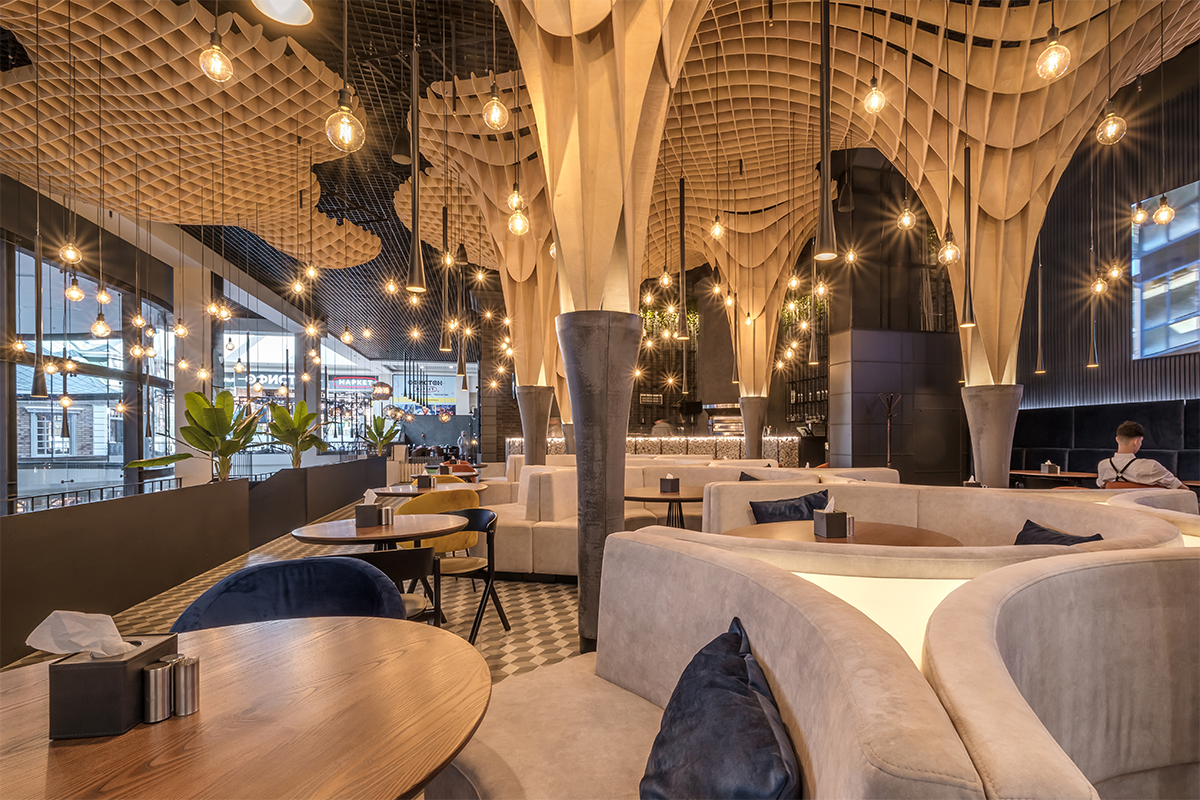Savor Genuine Asian Cuisine With a Pan-Asian Spin for a Culinary Journey
Beginning on a culinary trip with authentic Eastern food, enhanced with a Pan-Asian spin, provides a special chance to discover the abundant tapestry of tastes that specify the region's diverse culinary practices. As you consider these enticing meals, take into consideration the social stories and historical influences that shape them, each bite using a tale waiting to be uncovered. pan asian dining Islamabad.

Discovering Pan-Asian Flavors
In the world of worldwide gastronomy, Pan-Asian cuisine stands apart for its exceptional diversity and the unified interaction of tastes from various Eastern cultures. This culinary approach commemorates the abundant traditions and distinct active ingredients located throughout the continent, developing a tapestry of tastes that is both appealing and enjoyable. Trick to Pan-Asian food is its capability to balance contrasting flavors-- sweet, salty, spicy, and sour-- while highlighting the freshness and quality of each active ingredient.
From the umami-rich soy sauce of Japan to the fiery chili peppers of Thailand, Pan-Asian cuisine offers a substantial scheme of tastes. These elements are often incorporated in innovative methods, improving meals with layers of intricacy. As an example, using fragrant herbs such as lemongrass and cilantro, typical in Vietnamese and Thai cuisine, adds a revitalizing brightness to meals, while the incorporation of coconut milk supplies a luscious, rich texture.
The focus on fresh produce and fragrant flavors guarantees that each meal is not only a feast for the taste yet likewise for the detects. Pan-Asian cuisine invites restaurants to start a culinary trip, exploring the vast and differed landscapes of Asian gastronomy with every bite.
Blend Meals to Try
While Pan-Asian cuisine is commemorated for its standard flavors, the modern-day culinary landscape is increasingly welcoming blend meals that mix these classic components with impacts from other regions. This cutting-edge method not just honors the abundant heritage of Asian cookeries but additionally introduces novel preference experiences that interest modern palates.
A prime instance of such a blend recipe is the Korean-Mexican taco, where marinated bulgogi beef is wrapped in a cozy tortilla, topped with kimchi and a hot gochujang-infused salsa. This mix marries the vibrant, mouthwatering tastes of Korea with the lively, fresh components of Mexican cuisine. In a similar way, sushi burritos have acquired popularity, integrating the fragile artistry of Japanese sushi with the hearty, hand-held benefit of a burrito, frequently including combination ingredients like tempura shrimp and avocado with a drizzle of wasabi mayo.
Another significant dish is Thai curry ramen, which instills the creamy, aromatic spices of Thai curry into the calming brew of typical Japanese ramen, creating a harmonious mix that entices the senses. These blend recipes extend past plain novelty; they stand for a cooking dialogue between societies, motivating expedition and development in the globe of Pan-Asian cuisine.
Vital Ingredients and Flavors
To truly value Pan-Asian food, one need to recognize the essential components and flavors that create its structure. This varied culinary design draws from a rich tapestry of Asian traditions, employing an unified mix of structures and flavors.
Aromatic elements are crucial, with garlic, lemongrass, and ginger being ubiquitous across different Pan-Asian dishes. These ingredients provide an aromatic base that boosts the complexity of flavors. Spices such as celebrity anise, cardamom, and cinnamon present warmth and character, echoing impacts from regions like China and India.

Food Preparation Techniques and Tips
Understanding the art of Pan-Asian food needs experience with its distinct cooking techniques, each contributing to the dynamic tapestry of tastes this cooking practice is commemorated for. Central to these methods is the stir-fry, a rapid cooking method that preserves the dietary stability and dazzling shades of components. Using a wok, the stir-fry technique enables also heat distribution, important for achieving the characteristic texture and flavor equilibrium of Pan-Asian meals.
One more fundamental method is steaming, particularly widespread in Chinese food. This mild approach maintains the natural tastes and nutrients of ingredients, making it perfect for fish and find out here now shellfish and vegetables. Dumplings, a precious staple, often take advantage of steaming, resulting in soft, delicious textures.
Grilling, additionally important, gives smoky midsts to recipes such as Oriental bulgogi or Japanese yakitori (Romantic restaurants Islamabad). This method commonly entails marinating active ingredients, enabling flavors to pass through deeply prior to cooking over an open flame or hot plate
Last but not least, understanding the art of stabilizing tastes-- wonderful, sour, salty, bitter, and umami-- is crucial. Effectively layering these components can raise a meal from ordinary to phenomenal, using a complicated and pleasing cooking experience that symbolizes the significance of Pan-Asian cuisine.
Dining Experiences Worldwide
Across the world, Pan-Asian cuisine uses an unrivaled eating experience, commemorated for its abundant tapestry of flavors and dynamic presentations. This culinary sensation has gone beyond cultural boundaries, catching the hearts and tastes of food lovers worldwide. In worldwide cities like New York, London, and Sydney, Pan-Asian restaurants function as fusions where cooking traditions from Thailand, Japan, China, and beyond converge, providing diners with an eclectic mix of dishes that highlight the region's diversity.
The international allure of Pan-Asian food hinges on its capability to supply both credibility and innovation. Cooks skillfully marry standard ingredients such as lemongrass, soy sauce, and miso with modern techniques, causing meals that are both familiar and refreshingly new. This fusion permits diners to begin on a cooking journey that respects heritage while welcoming modernity.
Moreover, eating experiences are raised via thoughtfully developed atmospheres that show the principles of Pan-Asian appearances. From minimalist Japanese-inspired insides bamboo sushi to vibrant Thai-themed areas, each dining establishment offers a distinct ambiance that enhances the cooking offerings. As an outcome, customers are not merely consuming a meal but partaking in a cultural experience, making Pan-Asian dining an absolutely international sensation.
Final Thought
The expedition of Pan-Asian cuisine offers an extensive understanding of the intricate interaction of tastes and more info here culinary traditions throughout Asia. By accepting fusion dishes such as Thai curry ramen and sushi burritos, the culinary trip not only highlights the versatility of typical active ingredients yet likewise showcases cutting-edge modern strategies. This gastronomic adventure, enhanced by important seasonings and cooking techniques, offers an unique chance to appreciate the social variety and cooking virtuosity that define Pan-Asian cuisine on a global range.
Embarking on a cooking journey through authentic Oriental cuisine, improved with a Pan-Asian spin, supplies an one-of-a-kind opportunity to explore the abundant tapestry of tastes that define the area's diverse culinary customs.In the world of worldwide gastronomy, Pan-Asian food stands out for its remarkable variety and the harmonious interaction of tastes from different Eastern cultures. Secret to Pan-Asian cuisine is its ability to stabilize contrasting flavors-- pleasant, salted, spicy, and sour-- while highlighting the freshness and high quality of each active ingredient.
